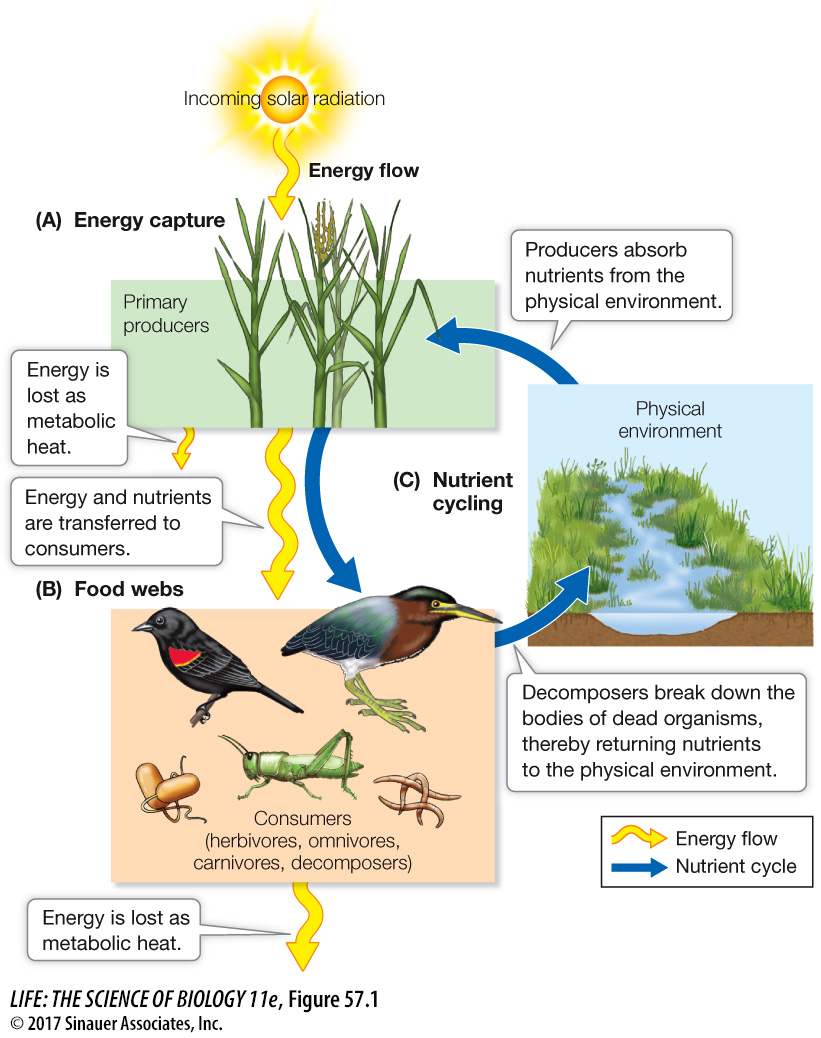Energy flowing through ecosystems originates with sunlight and inorganic and organic compounds
The flow of energy through ecosystems comes in a variety of forms (Focus: Key Figure 57.1). The most obvious source is the sun, which delivers radiant energy that warms Earth and provides energy for photosynthesis. Autotrophs such as plants, algae, and photosynthetic bacteria capture that radiant energy and fix it into organic compounds that make up the tissues of organisms (see Figure 57.1A). Energy can also come from the oxidation of inorganic nutrients by archaea and bacteria through the process of chemosynthesis, which involves using energy from inorganic compounds to take up CO2 and produce carbohydrates (see p. 544). Chemosynthesis typically occurs in ecosystems that lack sunlight and have high concentrations of particular inorganic compounds, such as hydrothermal vents, hot springs, and soils. These two forms of energy capture and carbon fixation are both involved in a process known as primary production. Ecologists use the term “primary productivity” to indicate the rate of primary production over time.
focus: key figure
Activity 57.1 Energy Flow through an Ecosystem
www.life11e.com/

Question
Q: Why does energy “flow” but nutrients “cycle” through ecosystems?
Energy is said to flow through an ecosystem because it moves from the original source (either the sun or inorganic nutrients) to primary producers and consumers, and then is lost as metabolic heat. Nutrients are said to cycle because they continually move between living organisms and the abiotic components of an ecosystem.
A third source of energy in an ecosystem is the product of primary production—